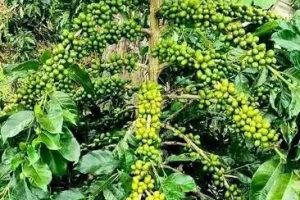
ADDIS ABABA–The ancient town of Beta Samati, meaning ‘house of audience’ in the local Tigrinya language illustrates the complex interplay of political and religious authority at an ancient town ancillary to the capital of Aksum, which was expressed and reinforced by an early basilica exhibiting a complex combination of pagan and Christian ritual paraphernalia, iconography and privileged access to luxuries traded over long distances, recent publication in the Cambridge University Press stated.
Future research at the site has the potential to clarify a range of topics, including the rise of one of Africa’s first complex polities, the development of Aksum’s trade connections, the conversion from polytheism to Christianity, and the eventual decline of the Empire of Aksum, it added.
Excavations at Beta Samati have yielded important new information about Pre-Aksumite and Aksumite societies, and ancient complex societies generally. Our findings overturn the notion that the Pre-Aksumite polity at Yeha collapsed leaving only “small rural settlements” (Fattovich 2010: 165). Conversely, we demonstrate that there was far greater continuity between Pre-Aksumite and Aksumite polities than previously recognised.
The ancient town of Beta Samati, meaning ‘house of audience’ in the local Tigrinya language, was first identified in 2009 after enquiries with local residents led by In 2009, the Southern Red Sea Archaeological Histories (SRSAH) researchers to investigate a hill near the modern village of Edaga Rabu. Excavations, launched two years later, have revealed small-stone, mud-mortar structures extending to depths of at least 3m in two areas (excavations have yet to reach strata devoid of cultural material). Mounds of stone debris on the surface suggest that stone-walled structures probably extend.
In terms of dating, the earliest current evidence for occupations in area A is indicated by Pre-Aksumite ceramics, which were found in direct association with two stratigraphically superimposed radiocarbon-dated seeds from the lowest excavated layers. In area B, the dating of two stratigraphically superimposed domesticated seeds from space 6 places the earliest use of the Beta Samati basilica in the fourth century AD. Two final radiocarbon assays on wood charcoal date the latest stages of habitation at Beta Samati to as late as the mid seventh century AD.
Excavations of Beta Samati have revealed a residential or workshop precinct and basilica. Our investigations clarify the chronology and spatial layout of Beta Samati, and have yielded evidence of trade, administration and religious activities.
It contains a complex of rectangular stone structures. Evidence for food preparation, small-scale metal and glass production, pack animals and coinage indicate both domestic and workshop activities, along with engagement in commercial activities. Importantly, architectural planning is indicated by the construction of a long wall (wall A), comprised of interlocking segments that were built in a single phase to create a series of adjoining rooms and spaces.
From the upper to lower strata, the ceramic assemblage primarily consists of undecorated utilitarian grey/black and brown/buff Late Aksumite wares, a lower quantity of orange/ red Middle Aksumite wares, often decorated with incised patterns, and a few Classic Aksumite and Pre-Aksumite sherds from the lowest layers.
Utilitarian pottery, large quantities of grinding stones and small storage caches indicate food storage, preparation and consumption. Differences in the distribution of pottery forms across area A provide information regarding the use of different spaces. A higher percentage of jars, large collared bowls, small cups and small bowls in space 1-perhaps an outdoor or courtyard area-suggests activities related to storage or consumption of food.
In space 4, a large assemblage of fragmented, Middle Aksumite open and closed bowls, bottles, cauldrons and a mogogo griddle (cf. Lyons 2007), found atop a matrix of burnt bone fragments and significant quantities of charcoal and ash, indicates cooking and food consumption. In a higher stratum of space 4, a large boulder with a flat upper surface, perhaps used as an anvil, was found in association with metal slag and glass wasters, suggesting the later use of this area for metal- and glass-working.
Archaeobotanical analysis has identified copious charred Poaceae seeds, most notably t’ef (Eragrostis tef), wheat (Triticum dicoccum) and barley (Hordeum vulgare). T’ef is an economically important crop in modern-day Ethiopia, used to make flat bread called injera. Its antiquity, however, is poorly understood, as relatively few sites have thus far yielded evidence of its use in ancient times (D’Andrea 2008; D’Andrea et al. 2008b).
The area A excavations yielded 301 lithics, most of which are of quartz (49 per cent) or obsidian (43 per cent), followed by chert, chalcedony and basalt. The 14 cores are evenly split between non-obsidian single-/multi-platform examples, and obsidian bipolar cores. The debris (85 per cent) is dominated by direct percussion flakes, blades and fragments (52 per cent), but also includes small bipolar flakes/blades (17 per cent). The 20 shaped tools (7 per cent) include eight end or side scrapers, one 78mm-long basalt circular scraper, seven small obsidian backed pieces, including five crescents, and four obsidian outil ecailles.
The Ethiopian Herald Sunday Edition, December 22/2019
BY HAFTU GEBREZGABIHER





